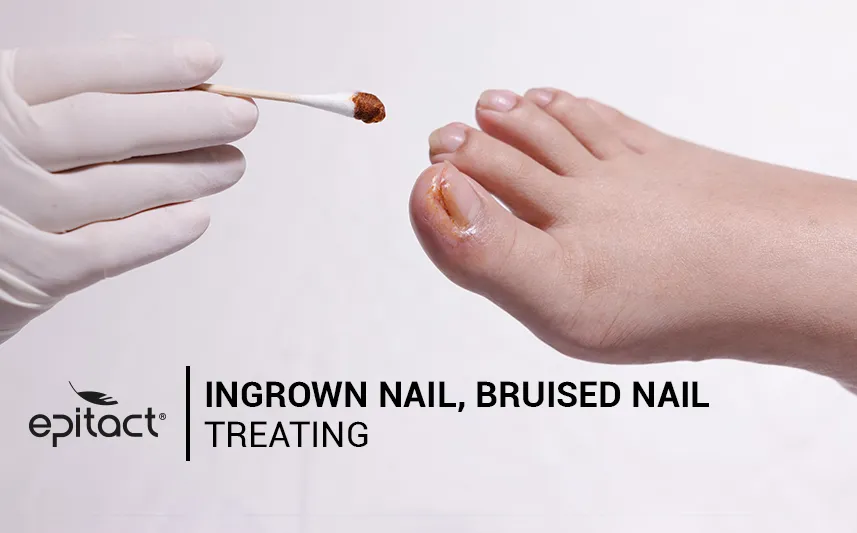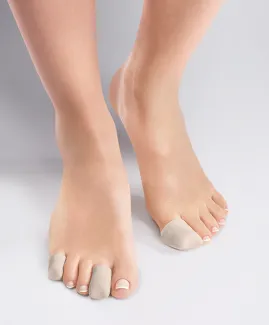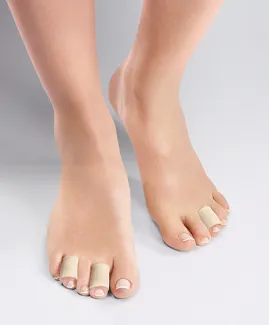
Bruised toenails and ingrown toenails are common pathologies that are widely known, including by chiropodists. It would be good to differentiate one from another but also from other nail-related pathologies such as nail fungus.
Ingrown toenail
Painful, the ingrown toenail is resulting from the penetration of the edge of the toenail in the soft part of the skin. It can affect any toe, but it is most frequently found on the first and second toes.
How does it develop?
The development of an ingrown toenail has 3 successive phases during which the seriousness and the discomfort increase.
- 1st phase: First, the squeezing between the side edge of the toenail and the skin leads to a mild inflammation causing the first pain and turning the skin pink. The absence of breaking in at this stage is still protecting the toe from an infection.
- 2nd phase: If it isn’t treated or at least taken in charge (specialist consult, use of a protection…), the break-in of the skin can cause a risk of infection. It happens generally in the furrow next to the toenail. The skin turns red and swells. The pain becomes more intense, in particular to the touch. The contact with the shoe makes walking and standing painful.
- 3rd phase: About two weeks after the ingrowing, the infected ingrown toenail burgeons. The bulge is then very fleshy and hypersensitive. It is associated with a purulence that can be considerable. The inflammation causes strong pain and the edge of the toenail is no longer accessible. A surgical intervention from a specialist is inevitable to treat and heal the toe.
What are the factors causing ingrown toenails?
There are many causes that can be at the origin of an ingrown toenail, they can be associated one with another.
Most of the time, the round cutting of toenails and narrow shoes are responsible. Some foot pathologies can also cause ingrown toenails, such as claw toes or hallux valgus. A bad walking form, the shape and nature of the toenails (thickening) are also frequent causes.
Diabetes, a complicating factor
I is necessary to specify that diabetic people are particularly exposed to stage 2 or 3 ingrown toenails due to the nervous or circulatory failure that can exist. Prevention is then more than necessary and a chiropodist consultation is essential to prevent complications and more serious injuries.
Prevention rather than surgery
To treat oneself, a surgical treatment is frequent and necessary in many cases. However, most of the time prevention allows to avoid the appearance of injuries, in particular for people prone to relapses.
A daily attention is necessary. Taking care of your toenails, particularly when cutting them (square shape cutting), reduces the risk of an ingrown toenail but also allows the detection of a starting inflammation.
Wearing a silicone toe cap* aims to reduce rubbings, distribute pressure and limit the risks of development when the ingrown toenail is in first stage. Its objective is to soothe the pain after treatment by a chiropodist.
Bruised toenails
Bruised toenail (or black toenail) is characteristic of a subungual hematoma. It can affect all the toes but it affects the first and the second one in particular.
What are the factors causing bruised toenails?
The appearance of a black toenail is caused by repeated impacts or traumas. Among frequent causes, we can note an excessive compression of the toes in the shoe or, on the contrary, a shoe too wide which is not maintaining the foot in the right position. People who have a difference of size between the right and the left foot can also know this difficulty.
Lastly, hyperkeratosis (increasing of the thickness of the skin), produced by significant rubbing or hyper-pressures, can cause the appearance of callus on the toe leading to the formation of the bruise and the black toenail.
How does the black toenail develop?
The hematoma overruns on the surface of the toenail, which, if not treated or cared for properly, will come off after a few weeks and then end up falling. The toenail bed is then no longer protected. The toenail regrowth is long and can take from ten to twelve months.
Who are the more affected people?
Athletes, hikers and people working with unsuitable shoes are the most exposed. The toe cap sport* was especially developed to protect from repeated impact on the toenails during sport activities. The elderly, who are frequently subjects to foot deformities are also very concerned.
To treat a bruised toenail, a specialist intervention is possible. However, conscientious care at the early start of the appearance and the use of silicone protections such as a toe cap* will avoid the development of the hematoma and the fall of the toenail.
*These products are class I medical devices that bear the CE marking under this regulation. Carefully read the instructions before use. Manufacturer: Millet Innovation. 04/2020
 Pharmacie
Pharmacie
